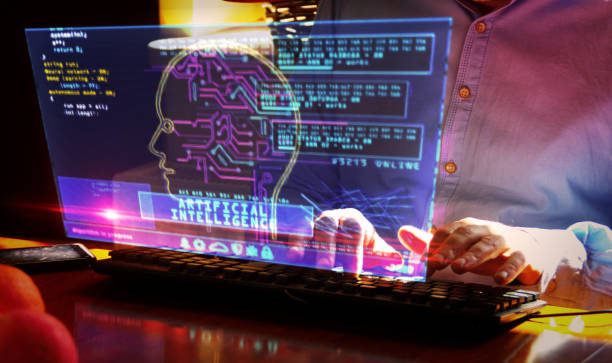What is an AI Robot and How Does it Work?
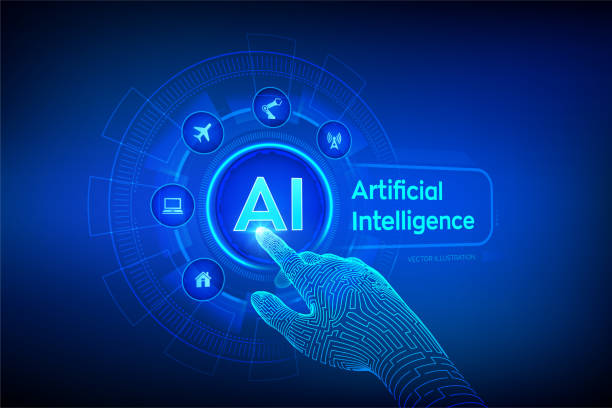
Today, the term #Artificial_Intelligence (AI) has increasingly permeated our lives.
One of the prominent manifestations of this technology is the AI Robot.
But what exactly is an AI robot and how does it work?
Simply put, an AI Robot is a computer program or a machine that, using artificial intelligence algorithms, is capable of performing tasks that typically require human intelligence.
These tasks can include learning, reasoning, problem-solving, natural language understanding, and pattern recognition.
An AI Robot uses data to learn and improves its performance over time.
The way an AI Robot works depends on the type of algorithms used.
Some AI Robots use artificial neural networks, which are inspired by the structure of the human brain.
These networks are capable of learning complex patterns in data.
Other AI Robots use machine learning algorithms such as decision trees and support vector machines.
These algorithms are suitable for solving classification and regression problems.
In general, an AI Robot uses the following steps to perform its tasks:
- Data Acquisition: The AI Robot receives data from various sources such as sensors, databases, and the internet.
- Data Processing: The AI Robot processes the data to extract useful information.
- Learning: The AI Robot learns from data using machine learning algorithms.
- Decision-making: The AI Robot makes decisions based on the learned information.
- Action: The AI Robot takes action based on its decision.
AI Robots are currently used in many industries such as automotive, medicine, financial services, and retail, and their role is expected to become more prominent in the future.
Did you know that 94% of a company’s first impression is related to its website design?
Rasaweb helps you create the best first impression by providing professional corporate website design services.
✅ Create a professional and reliable image for your brand
✅ Easier attraction of potential customers and improvement of online position
⚡ Get a free consultation for corporate website design
Amazing Applications of AI Robots in Everyday Life

AI Robots are no longer a science fiction concept; they have increasingly permeated our daily lives.
From voice assistants to self-driving cars, AI Robots are changing the way we live, work, and interact with the world around us.
Here are some amazing applications of AI Robots in everyday life:
- Voice Assistants: Voice assistants like Siri, Alexa, and Google Assistant use AI Robots to understand and respond to our voice commands.
They can help us with tasks such as setting reminders, playing music, sending messages, and controlling smart home devices. - Self-driving Cars: Self-driving cars use AI Robots to understand their surroundings and drive safely.
They can detect obstacles using sensors and cameras and adjust their route based on traffic conditions. - Facial Recognition: Facial recognition technology uses AI Robots to identify individuals based on their facial features.
This technology is used in security applications, payment systems, and social networks. - Medicine: AI Robots help doctors in diagnosing diseases, developing drugs, and providing personalized healthcare.
- Customer Service: AI Robots are used in chatbots and call centers to answer customer questions and provide support.
These are just a few examples of the many applications of AI Robots in everyday life.
With advancing technology, AI Robots are expected to play a more significant role in our lives and revolutionize how we interact with the world around us.
Are AI Robots a Threat to Human Jobs?
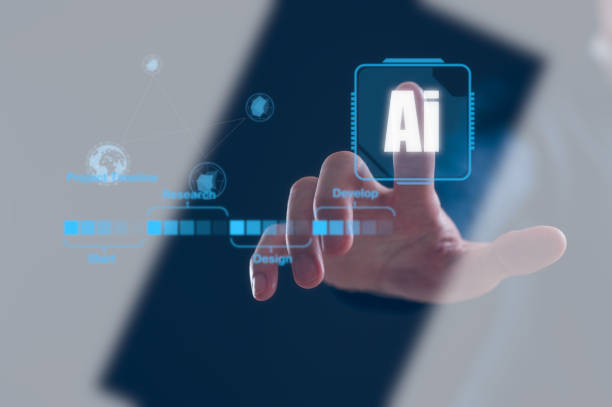
With the rapid advancement of AI Robot technology, concerns about its impact on the job market have increased.
The question arises whether AI Robots are a threat to human jobs or not.
On one hand, AI Robots are capable of performing many tasks that were previously done by humans.
This includes repetitive, dangerous, and strenuous tasks.
For example, AI Robots can be used in production lines, warehouses, and call centers.
On the other hand, AI Robots can also create new job opportunities.
The development, implementation, and maintenance of AI Robots require human expertise.
Additionally, AI Robots can assist humans in performing their tasks and increase their productivity.
Studies have shown that the impact of AI Robots on the job market is complex.
Some jobs may be fully automated, while others may change or require new skills.
For example, AI Robots can help doctors diagnose diseases, but the expertise and human judgment of doctors are still needed.
Similarly, AI Robots can help teachers provide personalized education, but the communication and motivational skills of teachers are still needed.
Overall, AI Robots are not an absolute threat to human jobs, but rather a powerful tool that can create both opportunities and challenges.
To succeed in the future world of work, humans must learn new skills and adapt to changes.
These skills include critical thinking, problem-solving, creativity, and emotional intelligence.
| Advantage | Description |
|---|---|
| Increased Productivity | AI Robots can perform tasks faster and more accurately than humans. |
| Reduced Costs | AI Robots can reduce labor costs. |
| Improved Quality | AI Robots can improve the quality of products and services. |
| Better Decision-making | AI Robots can help make better decisions by analyzing data. |
Ethics and Responsibility in AI Robot Development

The development and use of AI Robots are accompanied by numerous ethical and responsibility challenges.
These challenges include the following:
- Privacy: AI Robots can collect and process large amounts of data, which can violate individual privacy.
- Discrimination: AI Robots can unintentionally be discriminatory, especially if trained on biased data.
- Responsibility: In the event of an error or harm caused by an AI Robot, determining responsibility is difficult.
- Transparency: AI Robot algorithms are often complex and difficult to understand, which can make trust in them difficult.
To address these challenges, it is necessary to adhere to ethical principles and responsibility in the development and use of AI Robots.
These principles include the following:
- Transparency: AI Robot algorithms should be as transparent and understandable as possible.
- Fairness: AI Robots should not be discriminatory.
- Privacy: AI Robots must protect individual privacy.
- Accountability: Mechanisms must exist to determine responsibility in the event of an error or harm caused by an AI Robot.
- Human Control: Humans must have ultimate control over AI Robots.
Adherence to these principles can help ensure the ethical and responsible use of AI Robots and prevent negative consequences.
Dreaming of a thriving online store but don’t know where to start?
Rasaweb is your comprehensive solution for e-commerce website design.
✅ Attractive and user-friendly design
✅ Increased sales and revenue⚡ Get a free consultation
The Future of AI Robots: Predictions and Probabilities
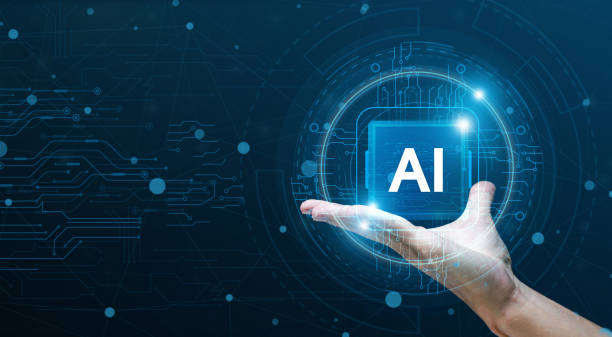
The future of AI Robots is very bright and full of potential.
Continuous advancements in machine learning, natural language processing, and computer vision enable the development of more complex and capable AI Robots.
In the future, AI Robots are expected to play a more significant role in our lives.
They can assist us in various fields such as healthcare, education, transportation, manufacturing, and customer service.
For example, AI Robots can help us with early disease diagnosis, personalized healthcare, educating students with special needs, autonomous vehicle driving, and 24-hour customer service.
However, the development of AI Robots also comes with challenges.
One of these challenges is ensuring the ethical and responsible use of AI Robots.
It is necessary to adhere to ethical principles and responsibility in the development and use of AI Robots to prevent their negative consequences.
Another challenge is training the workforce to work with AI Robots.
With the widespread use of AI Robots, the workforce needs to learn new skills to be able to collaborate with AI Robots and use them effectively.
Overall, the future of AI Robots is bright and full of potential.
By adhering to ethical principles and responsibility and training the workforce, the benefits of AI Robots can be fully realized, and their negative consequences can be prevented.
AI Robots in Iran: Opportunities and Challenges

The development and use of AI Robots in Iran bring numerous opportunities and challenges.
Iran, with its young and educated workforce, has high potential for developing AI Robot technology.
Opportunities for AI Robot development in Iran include the following:
- Solving Internal Problems: AI Robots can help us solve internal problems such as traffic, air pollution, water scarcity, and resource management.
- Increasing Productivity: AI Robots can increase productivity in various industries such as agriculture, industry, and services.
- Creating New Job Opportunities: The development of AI Robots can create new job opportunities in fields such as software development, data analysis, and robotics engineering.
- Competitiveness: The development of AI Robots can help increase the country’s competitiveness at the international level.
Challenges for AI Robot development in Iran include the following:
- Lack of Investment: The development of AI Robots requires significant investment in research and development, which is currently limited in Iran.
- Lack of Specialists: Iran faces a shortage of specialists in the fields of artificial intelligence, machine learning, and robotics.
- Infrastructure Limitations: The development of AI Robots requires appropriate infrastructure such as high-speed internet and access to big data, which is currently limited in Iran.
- Legal and Regulatory Barriers: Legal and regulatory barriers can hinder the development and use of AI Robots in Iran.
To overcome these challenges, it is necessary for the government and the private sector to cooperate and develop and implement policies and programs to support the development of AI Robots in Iran.
Introduction to Types of AI Robots and Their Applications

The world of AI Robots is vast and diverse, and there are various types of AI Robots, each designed for specific applications.
Here are some common types of AI Robots and their applications:
- Chatbots: Chatbots are AI Robots designed to interact with humans via text or voice.
They can be used to provide customer service, answer frequently asked questions, and provide information. - Voice Assistants: Voice assistants like Siri, Alexa, and Google Assistant are AI Robots designed to perform various tasks using voice commands.
They can be used to set reminders, play music, send messages, and control smart home devices. - Industrial Robots: Industrial robots are AI Robots designed to perform repetitive and dangerous tasks in industrial environments.
They can be used for welding, painting, packaging, and assembling parts. - Service Robots: Service robots are AI Robots designed to provide various services to humans.
They can be used for cleaning, food delivery, healthcare, and assisting the elderly. - Self-driving Cars: Self-driving cars are AI Robots designed to drive without human intervention.
They can be used for transporting passengers and goods.
These are just a few examples of types of AI Robots and their applications.
With advancing technology, new types of AI Robots with more diverse applications are expected to be developed.
| Type of AI Robot | Description |
|---|---|
| Reactive AI Robot | This AI Robot makes decisions solely based on its current information and has no memory of the past. |
| Limited Memory AI Robot | This AI Robot can store limited information from the past and use it for decision-making. |
| Theory of Mind AI Robot | This AI Robot can reason about the thoughts and feelings of others. |
| Self-aware AI Robot | This AI Robot possesses consciousness and self-awareness. |
Skills Required for Working in the Field of AI Robots
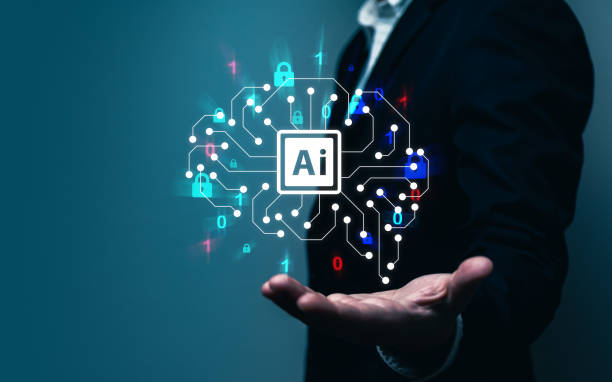
The field of AI Robots is a growing field, and the demand for skilled professionals in this area is increasing.
To work in this field, you need to have the following technical and soft skills:
- Technical Skills:
- Programming: Proficiency in programming languages such as Python, C++, and Java is essential for developing AI algorithms and AI Robot applications.
- Mathematics: Knowledge of mathematics such as linear algebra, calculus, and statistics is essential for understanding and developing AI algorithms.
- Machine Learning: Familiarity with machine learning algorithms such as regression, classification, clustering, and neural networks is essential for training AI Robots.
- Natural Language Processing: Familiarity with natural language processing techniques is essential for developing AI Robots capable of understanding and generating human language.
- Computer Vision: Familiarity with computer vision techniques is essential for developing AI Robots capable of seeing and understanding images.
- Soft Skills:
- Problem-solving: The ability to solve complex problems using logical and analytical methods is essential.
- Critical Thinking: The ability to critically evaluate information and arguments is essential.
- Creativity: The ability to offer innovative solutions to problems is essential.
- Communication: The ability to communicate effectively with others, both verbally and in writing, is essential.
- Teamwork: The ability to work effectively in a team is essential.
In addition to these skills, having an interest in learning and staying up-to-date with the latest advancements in the field of AI Robots is also essential.
Worried about losing customers because you don’t have a professional e-commerce site?
With e-commerce site design by Rasaweb, forget these worries!
✅ Significant increase in sales and conversion rate of visitors to customers
✅ Professional and user-friendly design that builds customer trust
⚡ Get a free consultation from Rasaweb
How to Build an AI Robot: A Step-by-Step Guide
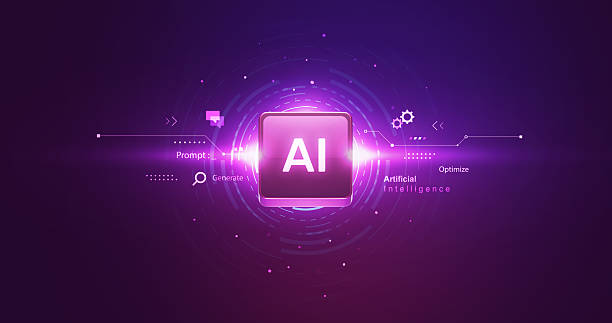
Building an AI Robot can be a challenging but very exciting project.
Here is a step-by-step guide to building an AI Robot:
- Define the Goal: Before starting, you must specify your goal for building the AI Robot.
What will your AI Robot do? What problems will it solve? - Data Collection: AI Robots need data to learn.
Therefore, you need to collect the necessary data to train your AI Robot. - Algorithm Selection: There are various algorithms for machine learning.
You need to choose an algorithm that is suitable for your goal. - Model Training: Using the collected data, you need to train your machine learning model.
- Model Evaluation: After training the model, you need to evaluate it to ensure it performs well.
- Model Implementation: After evaluating the model, you can implement it in an application or device.
- Testing and Improvement: After implementing the model, you need to test it and improve it if necessary.
To build an AI Robot, you can use various tools and libraries such as Python, TensorFlow, and PyTorch.
Also, you can use online educational resources and training courses to learn the necessary skills.
Key Concepts in AI Robots You Need to Know

To better understand AI Robots, you need to be familiar with some key concepts in this field.
Here are some of these concepts:
- Artificial Intelligence: Artificial intelligence refers to the ability of machines to perform tasks that typically require human intelligence.
- Machine Learning: Machine learning is a branch of artificial intelligence that allows machines to learn from data without being explicitly programmed.
- Neural Networks: Neural networks are mathematical models inspired by the structure of the human brain and used to learn complex patterns in data.
- Natural Language Processing: Natural language processing refers to the ability of machines to understand and generate human language.
- Computer Vision: Computer vision refers to the ability of machines to see and understand images.
- Deep Learning: Deep learning is a type of machine learning that uses deep neural networks to learn complex patterns in data.
Familiarity with these concepts can help you better understand AI Robots and their applications.
Frequently Asked Questions
| Row | Question | Answer |
|---|---|---|
| 1 | What is an AI robot? | An AI robot is a machine capable of understanding, reasoning, learning, and problem-solving, and can perform complex tasks with relative autonomy. |
| 2 | What are the most important applications of AI robots? | Key applications include industrial manufacturing, customer services (chatbots), medicine and surgery, autonomous transportation, space exploration, and military affairs. |
| 3 | What is the main difference between an AI robot and a regular robot? | A regular robot only follows programmed instructions, while an AI robot can learn from data, make decisions, and adapt to new environments. |
| 4 | How do AI robots learn? | They learn through machine learning algorithms (such as deep learning, reinforcement learning) and by processing vast amounts of data, identifying patterns, and improving their performance. |
| 5 | Can AI robots have emotions? | Currently, AI robots do not have real emotions in the human sense. They can imitate or detect emotions, but they do not understand or experience them. |
| 6 | What are the current limitations of AI robots? | Limitations include the need for large amounts of data, inability to understand abstract concepts, lack of true creativity, ethical issues, and challenges of generalization in new environments. |
| 7 | What is the role of AI in the development of humanoid robots? | AI helps humanoid robots walk, maintain balance, perceive their surroundings, interact with humans, and perform complex tasks. |
| 8 | How is the future of AI robots predicted? | AI robots are predicted to become smarter, more autonomous, and capable of performing more complex tasks in daily life and industry, with increased interaction with humans. |
| 9 | Can AI robots replace all human jobs? | It is unlikely that all human jobs will be replaced. Robots will take over many repetitive and dangerous tasks, but jobs requiring creativity, empathy, and ethical judgment will remain. |
| 10 | What ethical and social challenges arise with the expansion of AI robots? | Challenges include issues related to privacy, data security, ethical decision-making by robots, impact on employment, and accountability in case of errors. |
And other services of Rasaweb Advertising Agency in the field of advertising
Smart Website Development: A specialized service for digital branding growth based on attractive UI/UX design.
Smart Digital Branding: A specialized service for increasing sales growth based on marketing automation.
Smart Social Media: A combination of creativity and technology for online growth by using real data.
Smart Marketplace: A professional solution for increasing sales with a focus on optimizing key pages.
Smart Advertising Campaign: A new service for increasing sales growth through intelligent data analysis.
And over hundreds of other services in the field of online advertising, advertising consulting, and organizational solutions
Online Advertising | Advertising Strategy | Advertorials
Sources
Artificial Intelligence on Digiato
Artificial Intelligence Articles on Zoomit
Artificial Intelligence News on ISNA
Artificial Intelligence Reports on IRNA
? For your business to shine in the digital world and achieve its high goals, Rasaweb Digital Marketing Agency is with you with its expertise and experience. We pave your growth path by providing comprehensive digital marketing solutions, including website design with a modern user interface, SEO, online advertising, and social media management.
📍 Tehran, Mirdamad Street, next to Bank Markazi, Kazeroun Jonoubi Alley, Ramin Alley No. 6

